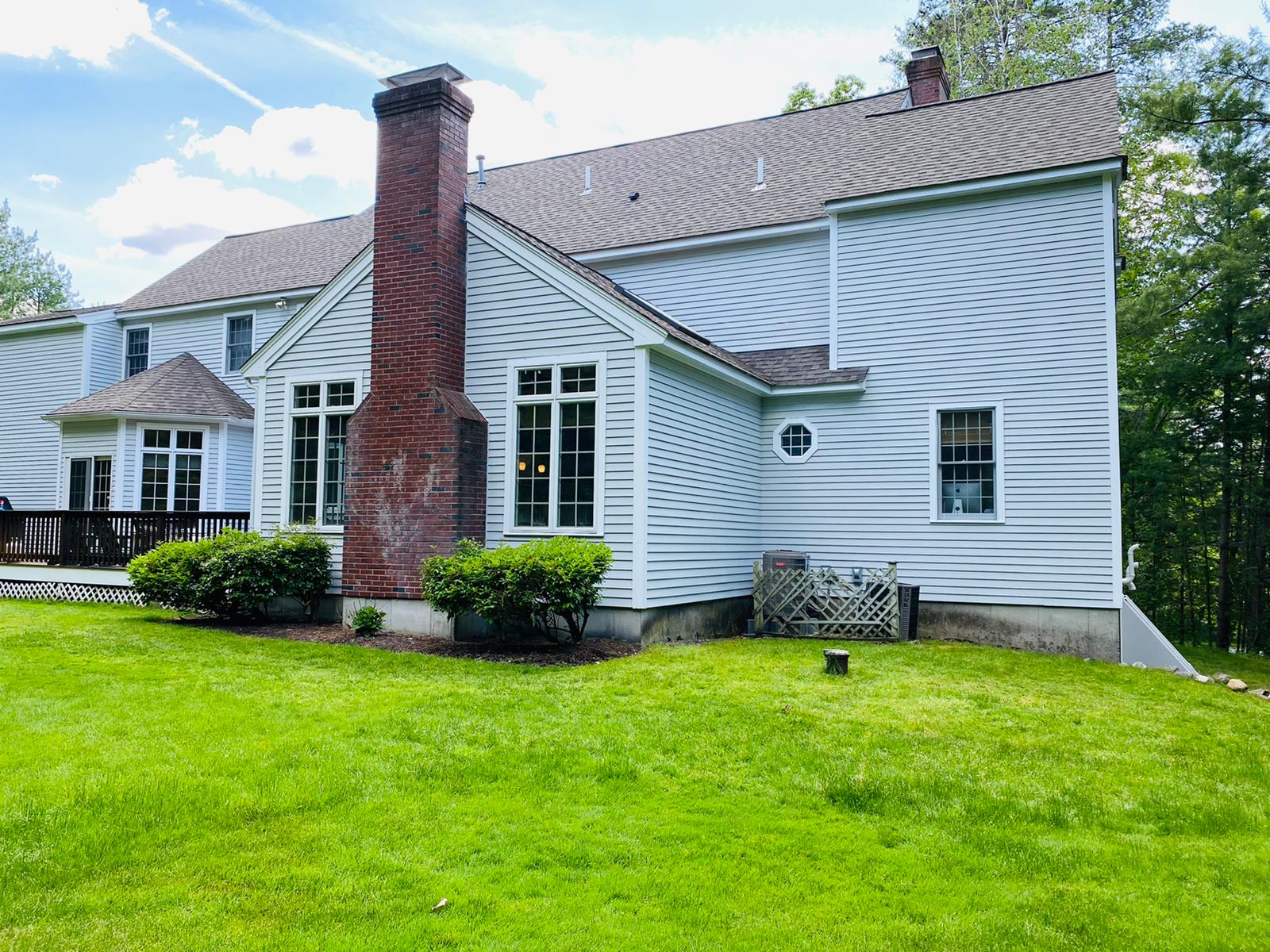Blogs

Best Paint for Hardie Board | Expert Painting Guide
Hardie Board, a popular brand of fiber cement siding, is renowned for its exceptional durability, resistance to pests, fire, and rot, and its ability to mimic the look of natural wood siding. While the material itself is incredibly robust, its longevity and aesthetic appeal heavily depend on the paint applied to it. Choosing the right type of paint and ensuring proper application are crucial steps to maximizing the lifespan of your Hardie Board siding and maintaining your home's curb appeal.
Why fiber cement siding needs the right paint
Fiber cement siding, like Hardie Board, is primarily composed of cement, sand, and cellulose fibers. While inherently durable, it's also a porous material. Applying the correct paint serves several vital functions:
Protection Against Moisture: Although fiber cement is moisture-resistant, paint provides an essential barrier against water absorption. This prevents issues like swelling, cracking, and the growth of mold or mildew, especially in humid climates or areas with frequent rain.
UV Protection: Paint shields the siding from harmful ultraviolet (UV) rays from the sun. UV exposure can degrade the material over time, leading to fading, chalking, and premature breakdown of the siding itself.
Enhanced Durability: A high-quality paint finish adds another layer of protection against minor impacts, abrasion, and general wear and tear, extending the overall life of the siding.
Aesthetic Appeal: Beyond protection, paint is what gives your Hardie Board its color and finish. The right paint creates a beautiful, long-lasting exterior that enhances your home's curb appeal and complements its architectural style.
Warranty Compliance: Many Hardie Board warranties require the use of specific types of primers and paints for the warranty to remain valid. Using an incompatible paint could void your coverage.
Recommended paint types (acrylic latex, elastomeric)
The unique composition of fiber cement siding means it requires specific types of paint for optimal adhesion, flexibility, and longevity.
100% Acrylic Latex Paint (Best All-Around Choice):
Why it's ideal: This is consistently the top recommendation for Hardie Board. 100% acrylic latex paint offers excellent adhesion to porous surfaces like fiber cement. Crucially, it's highly flexible, allowing it to expand and contract with the siding as temperatures change, preventing cracking and peeling. It also provides excellent breathability, allowing any trapped moisture vapor to escape.
Features to look for: Choose a high-quality, exterior-grade 100% acrylic latex paint. Look for products specifically formulated for masonry, concrete, or fiber cement, as these often have enhanced adhesion and durability properties. Brands may offer "self-priming" options, but a dedicated primer is almost always beneficial.
Finish: Available in various sheens, from flat to satin/eggshell. A satin or eggshell finish is often preferred for siding as it's easier to clean and hides minor imperfections better than high-gloss, while still offering a subtle sheen.
Elastomeric Paint (For Extreme Conditions or Problem Areas):
Why it's considered: Elastomeric paints are a type of acrylic latex paint designed with superior flexibility and thickness. They can stretch significantly (up to 300% or more) without cracking, making them excellent for bridging hairline cracks or providing extra protection in areas prone to extreme movement or moisture.
Features to look for: While offering exceptional protection, elastomeric paints are often thicker and can be more expensive. They are typically used in areas with harsh weather, where greater moisture resistance or crack bridging is needed, or for older siding that might have minor surface imperfections.
Consideration: Due to their thickness, they can sometimes trap moisture if not applied correctly or if the substrate isn't properly prepared. Ensure the siding is completely dry before application. For most new or well-maintained Hardie Board, a high-quality 100% acrylic latex is sufficient.
What to Avoid:
Oil-Based (Alkyd) Paints: Generally, avoid oil-based paints on fiber cement. While they can provide a hard finish, they lack the flexibility needed to accommodate the material's expansion and contraction, making them prone to cracking, blistering, and peeling over time.
Interior Paints: Never use interior paints on an exterior surface. They are not formulated to withstand the elements, UV radiation, or temperature fluctuations.
Prep work before painting hardie board
Proper preparation is just as critical as choosing the right paint. Skipping or rushing these steps will compromise adhesion and the longevity of your paint job.
Clean the Siding Thoroughly:
New Siding: Even new Hardie Board needs cleaning to remove manufacturing dust, dirt, or oils. A simple rinse with a garden hose and a soft brush is usually sufficient.
Existing Siding: For older siding, a more thorough cleaning is required. Use a pressure washer on a low-to-medium setting (no more than 1500 PSI, and keep the nozzle at least 12 inches from the surface to avoid damaging the siding) or a garden hose with a soft bristle brush. Use a mild detergent or a dedicated exterior cleaning solution to remove dirt, grime, mildew, and chalking.
Rinse and Dry: Rinse thoroughly to remove all cleaning solution residue. Allow the siding to completely dry (at least 24-48 hours, or longer in humid conditions) before proceeding. Painting wet fiber cement can lead to blistering and poor adhesion.
Inspect for Damage and Make Repairs:
Walk around your home and inspect the siding for any cracks, chips, holes, or loose panels.
Repair any damage using a high-quality exterior-grade caulk specifically designed for fiber cement or a compatible patching compound. Allow repairs to cure fully.
Caulk Gaps and Seams:
Apply exterior-grade, paintable caulk to seal gaps around windows, doors, trim, and at butt joints where two pieces of siding meet.
Use a durable, flexible caulk (e.g., acrylic latex with silicone) that can withstand expansion and contraction. Smooth out the caulk lines for a clean finish.
Prime the Siding:
Crucial Step: While some acrylic paints are "self-priming," applying a dedicated, high-quality acrylic latex exterior primer is highly recommended for Hardie Board, especially on new, unpainted siding or after significant repairs.
Benefits of Priming: Primer provides excellent adhesion for the topcoat, seals the porous surface of the fiber cement, promotes uniform color, and enhances the overall durability of the paint system.
Application: Apply primer evenly, covering all surfaces. Allow it to dry completely according to manufacturer instructions before painting.
Application tips for even coverage
Proper application techniques ensure a smooth, uniform, and long-lasting finish.
Check Weather Conditions:
Temperature: Paint only when temperatures are within the manufacturer's recommended range (typically 50-90°F / 10-32°C). Avoid painting in direct hot sun, as it can cause the paint to dry too quickly, leading to brush marks or poor adhesion.
Humidity: High humidity can slow drying times and affect paint performance.
Rain: Ensure no rain is expected for at least 24-48 hours after painting.
Use Quality Tools:
Brushes: Use high-quality synthetic brushes (nylon/polyester blend) for cutting in edges and trim.
Rollers: For larger flat areas, use a good quality roller cover. A 3/8-inch nap roller is often suitable for smooth siding, while a 1/2-inch or 3/4-inch nap might be better for textured or grooved Hardie Board to get into all crevices.
Sprayers: For fastest and most even coverage, especially on large areas, a high-quality airless paint sprayer is ideal. If using a sprayer, back-rolling or back-brushing after spraying can help ensure paint is pushed into the surface for better adhesion and a uniform finish.
Apply Evenly:
Two Thin Coats: It's almost always better to apply two thin, even coats of paint rather than one thick coat. Thin coats dry more thoroughly, adhere better, and are less prone to cracking, peeling, or sagging.
Work in Sections: Paint manageable sections at a time, working from top to bottom to minimize drips and maintain a wet edge.
Follow the Grain: If your Hardie Board has a wood-grain texture, try to apply paint in the direction of the grain to enhance the natural look.
Allow Proper Drying Time: Adhere strictly to the manufacturer's recommended drying times between coats and before exposing the newly painted surface to heavy moisture.
Maintenance & how often to repaint
Even the best paint on Hardie Board will eventually need attention. Proper maintenance can significantly extend the time between repainting.
Average Repaint Cycle:
Generally, a high-quality paint job on Hardie Board should last 10-15 years, with some premium paints potentially lasting up to 20 years.
This lifespan is significantly influenced by the quality of the paint, the preparation, and the local climate (e.g., intense UV exposure will shorten the cycle).
Regular Cleaning:
Annually or Biennially: Clean your Hardie Board siding at least once every year or two. Use a garden hose with a soft brush and a mild detergent (like dish soap) or a dedicated exterior house wash.
Pressure Washer (with caution): If using a pressure washer, use a low-pressure setting (no more than 1500 PSI) and a wide fan tip (25-40 degrees), keeping the nozzle at least 12-18 inches away from the surface. Avoid aiming water directly into seams or joints, as this can force water behind the siding.
Remove Mildew: For mildew, use a diluted solution of bleach (1 part bleach to 4 parts water), but always test in an inconspicuous area first and rinse thoroughly.
Routine Inspections:
Periodically inspect your siding for any signs of wear, such as fading, chalking, chipping, peeling, or cracking. Pay close attention to areas that receive intense sun exposure or are prone to moisture.
Check caulk lines around windows, doors, and seams. Reapply caulk as needed to maintain a watertight seal.
Prompt Repairs: Address any small issues (minor chips, peeling spots) promptly. Touching up small areas can prevent them from escalating into larger, more costly problems that require full repainting.
Landscaping Management: Keep shrubs, trees, and other vegetation trimmed away from the siding to allow for proper airflow and prevent moisture buildup, which can foster mold and mildew and trap debris against the painted surface.
By following these guidelines, you can ensure your Hardie Board siding remains a beautiful, protective, and long-lasting feature of your home for decades to come.
Ready to give your Hardie Board siding the durable, beautiful finish it deserves? Contact Masterpiece Painter today for a professional estimate and transform your home's exterior with confidence!
About Masterpiece Painter
For over 17 years Masterpiece Painter, has been serving communities all around New England. Let us help you make your wishes come true by turning your property into a Masterpiece
Get a Quote

© copyright 2023 All Rights Reserved.



